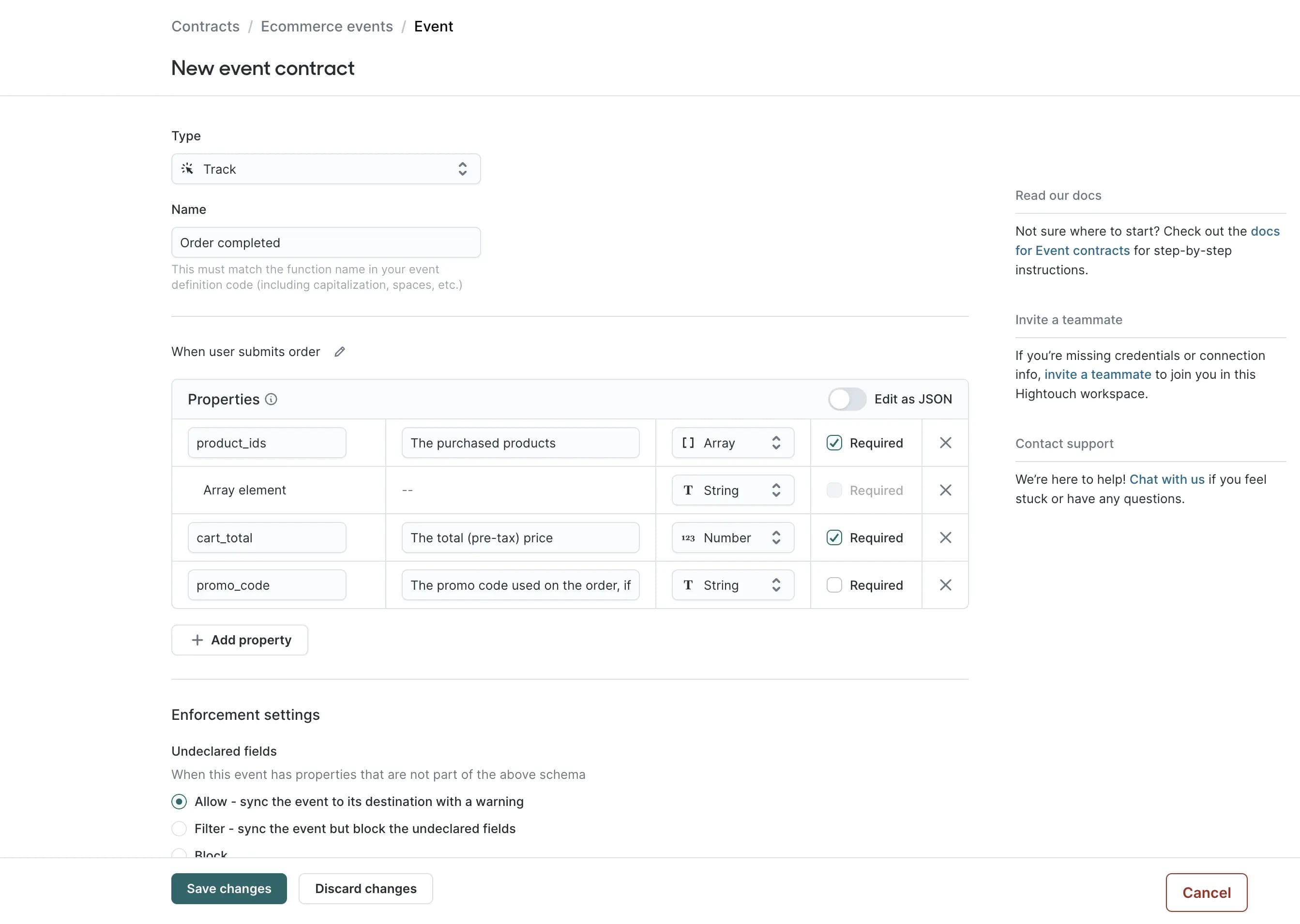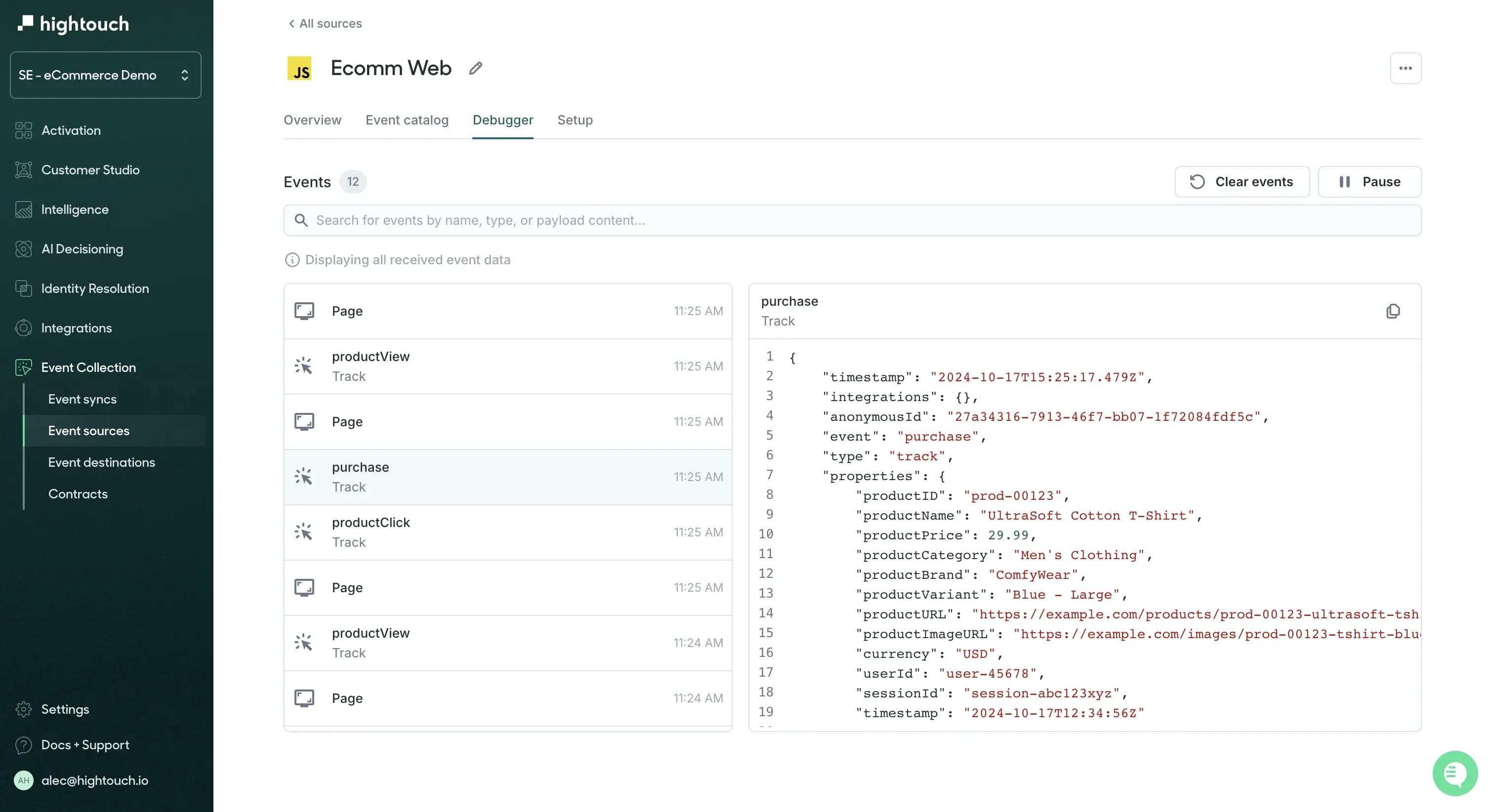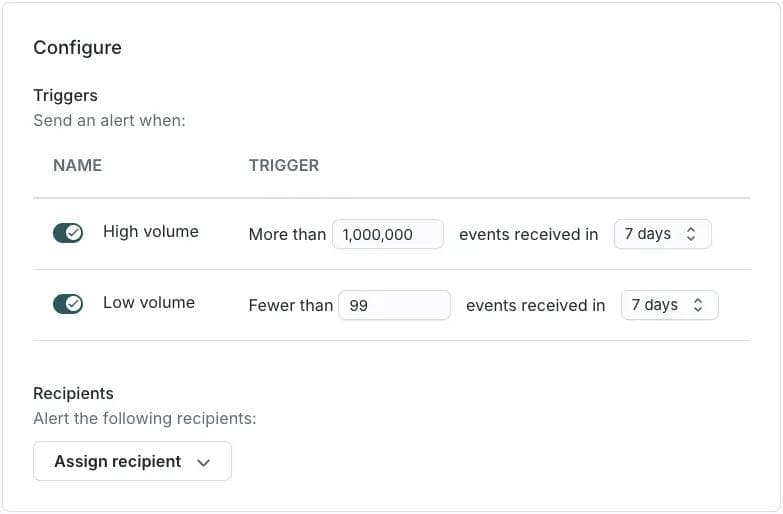Event collection is critical for understanding user behavior and driving business decisions, which makes migrating from one event collection platform to another particularly fraught. However, migration doesn’t have to be a risky or high-cost procedure.
Hightouch Events is a warehouse-native solution that addresses common challenges in event tracking. This guide provides a roadmap for migrating from your existing event tracking solution (e.g., Segment or Rudderstack) to Hightouch Events based on all of our experience helping customers migrate. Following this roadmap can minimize disruption to your existing data workflows while ensuring a smooth transition.
Why switch to Hightouch Events?
Hightouch Events addresses several pain points commonly faced by data and analytics engineers:
- Warehouse-native architecture: By storing event data directly in your data warehouse, Hightouch Events reduces data transfer costs and increases query flexibility. This approach centralizes your data where it's most accessible and valuable.
- Schema control: Hightouch Events lets you configure your schema as you choose and supports independent event tables (making a migration from Segment easy) and an atomic event table. This level of control allows you to optimize your schema for specific analytics and activation workflows.
- Event-based pricing: Charging by monthly tracked users (MTUs) is outdated and punitive. Hightouch Events scales costs with your actual event volume. This model is more predictable and cost-effective, especially for businesses with seasonal traffic patterns or viral growth.
- Built-in data quality tools: Data quality is a persistent event-tracking challenge. Hightouch Events includes features like data contracts, allowing teams to manage data quality proactively from the point of collection.
These features collectively give data teams more direct control over their event data, from initial collection to activation in downstream systems.
A roadmap for migrating to Hightouch Events
Migrating to a new event tracking system is a significant undertaking, but with proper planning and execution, it can be managed efficiently. Let's walk through the key steps to migrate to Hightouch Events:
- Preparing for migration: Scope your migration, decide on your data model and tracking plan, and estimate the time and resources required.
- Implementing Hightouch Events SDKs: Deploy Hightouch Events alongside your current system using our SDKs.
- Defining data contracts for data governance: Establish data contracts early in the process to ensure data quality and consistency.
- Validating your migration: Verify your setup and ensure data quality matches or exceeds your previous platform.
- Unifying historical and new data: Dedupe and unify your historical data with new events collected by Hightouch.
- Setting up monitoring and alerts: Set up monitoring, observability, and advanced alerting for long-term success.
- Updating downstream applications and destinations: Configure or set up the applications that consume your event data.
Step 1: Preparing for migration
Form a cross-functional team, including data engineers, analysts, and key stakeholders, to plan your migration. Define the scope, map data sources and destinations, and establish a realistic timeline. This phase sets the foundation for a smooth transition.
Step 2: Implementing Hightouch Events SDKs
Deploy Hightouch Events alongside your current system using our SDKs, which are backward compatible with Segment and Rudderstack. We recommend creating an analytics wrapper function to send events to both platforms during the transition to allow seamless data flow and easy data validation. Our complete guide has several code examples and advice on a gradual migration process.
Step 3: Defining data contracts for data governance
Utilize data contracts to establish data quality standards from the outset. These JSON Schema-based definitions ensure consistency and provide clear documentation for all data consumers. While data contracts are a paid, premium feature in some event tracking platforms, we think data governance is crucial for collecting and activating high-fidelity data, and we want to enable everyone using Hightouch Events to build for success.

Step 4: Validating your migration
Verify that Hightouch Events is capturing data correctly and consistently with your previous system. Compare event volumes, key properties, and user identifiers with SQL or your favorite tools.

Step 5: Unifying historical and new data
Integrate your historical data with newly collected events to ensure continuity in your analytics and data consumers. Consider timeframe, data volume, and schema differences when planning this step. Our docs guide you through the process with SQL examples and best practices for data unification.
Step 6: Setting up monitoring and alerts
Implement robust monitoring using Hightouch's built-in tools, including event volume graphs, a live debugger, and configurable alerts. These features help maintain data quality and quickly identify issues, such as unexpected event volume decreases or high rates of event sync failures.

Step 7: Updating downstream applications and destinations
Finally, update downstream destinations and applications to use the new, unified Hightouch Events data. This may involve reconfiguring existing tools or setting up new syncs.
Real-world success: Swift and seamless migrations to Hightouch Events
Minno, a streaming platform for children's content, successfully migrated from Segment to Hightouch Events in just one day. They were able to leverage Hightouch Events’ backwards compatibility at the API and warehouse schema levels. The move resulted in significant operational improvements, including a 100% increase in data delivery, a 98.96% improvement in sync frequency, and a 41% cost reduction.
“The beauty of Hightouch events is that the SDK is built in such a way that you can rip and replace Segment or any other event collection tool in minutes.”

John Henderson
CTO at Minno
A leading stock photography provider migrated to Hightouch Events with minimal work, also leveraging backward compatibility with their prior CDP event collection tool. They were convinced by Hightouch’s efficiency, data freshness, lower cost, and a higher degree of control over how data is stored and synced to downstream marketing tools. After switching SDKs, unioning their historical and new data, and updating audiences, they improved customer and business outcomes with fresher, more complete data.
Migrate to Hightouch Events
Migrating to a new event collection system is a significant undertaking, but it also presents an opportunity to improve your data workflows. Hightouch Events aims to provide data teams with more direct control over their event data, from collection to activation, aligning with the needs of modern, data-driven organizations.
We encourage you to review our in-depth migration guide in the Hightouch documentation for a more detailed walkthrough of the migration process, including SQL examples for data validation and best practices for each step.
If you're considering switching to Hightouch Events and would like to discuss how it might fit into your data stack, our team can provide a tailored demo and answer any technical questions. We're committed to supporting your team throughout migration, ensuring you can fully leverage Hightouch Events’ capabilities in your data ecosystem.















